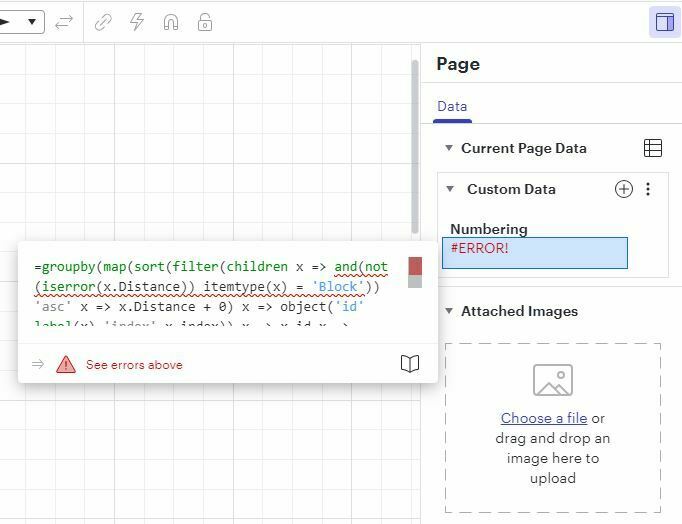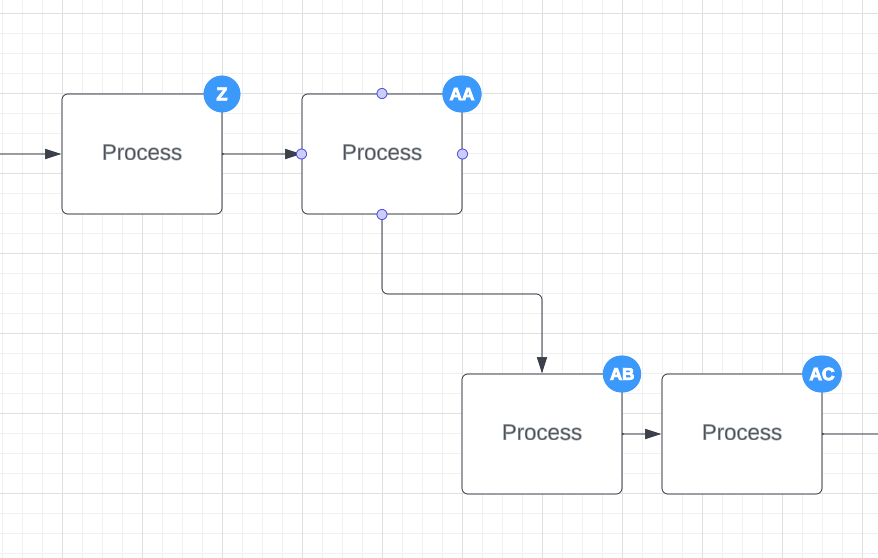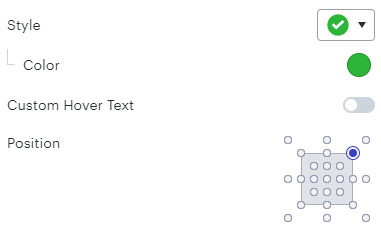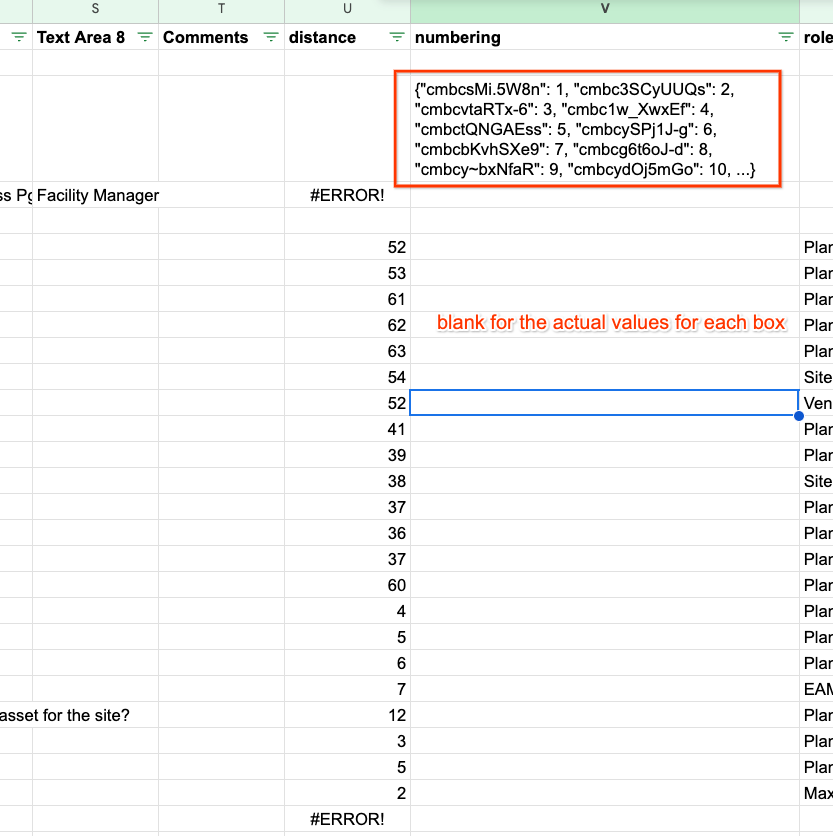Looking for a way to auto-number the steps in your flowchart? Check out this post on how you can utilize conditional formatting and formulas to accomplish this!
Please use the steps below to accomplish this on your diagram.
1. Add shape data "Start" to a start node with the value 0. This allows shapes connected to it to know it's part of the flow chart (as opposed to the note).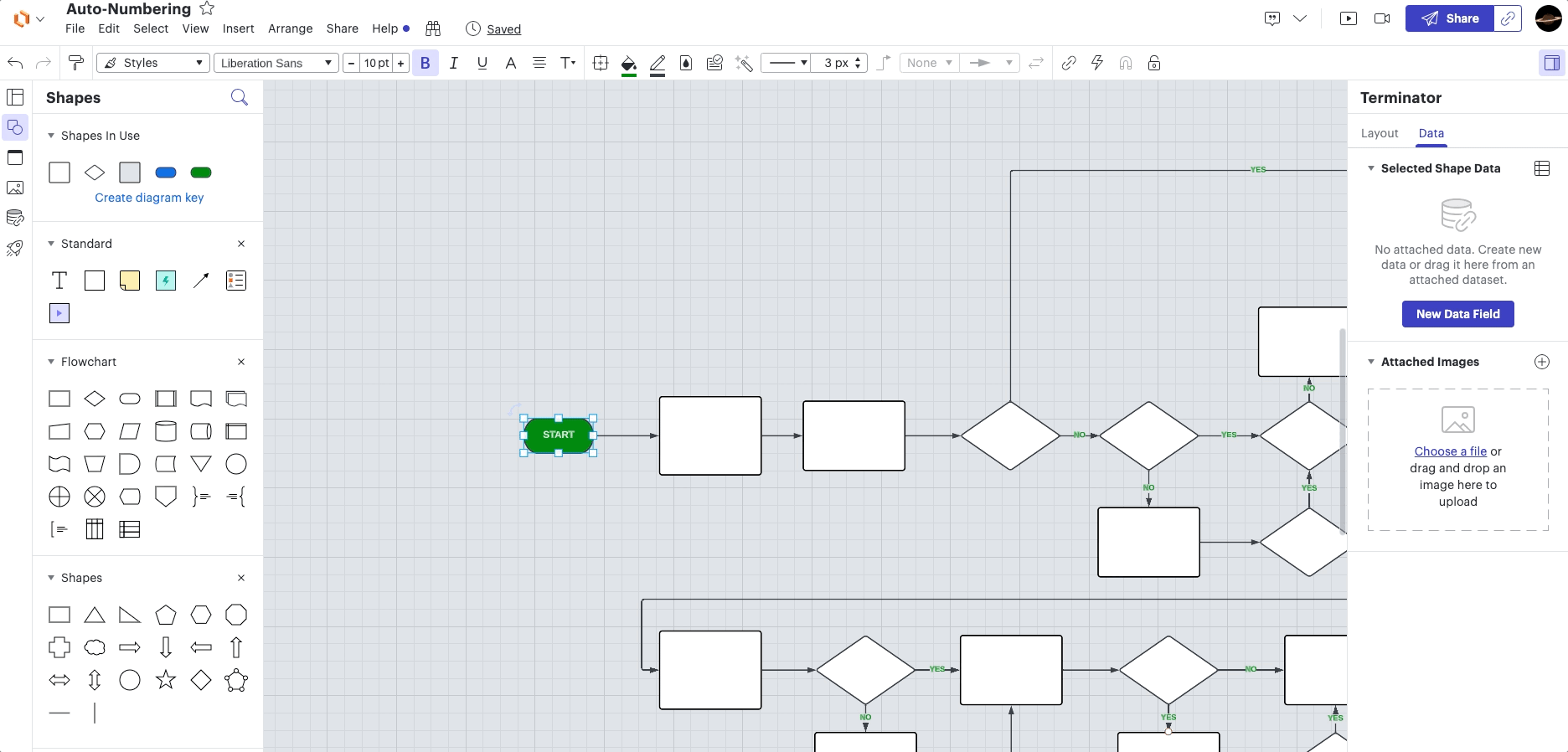
2. Add data "Distance" to all of the shapes with the formula =count(upstreamdeep) + upstreamdeep.Start. This will be defined with the distance from start or error (if the shape is not in the flow chart).
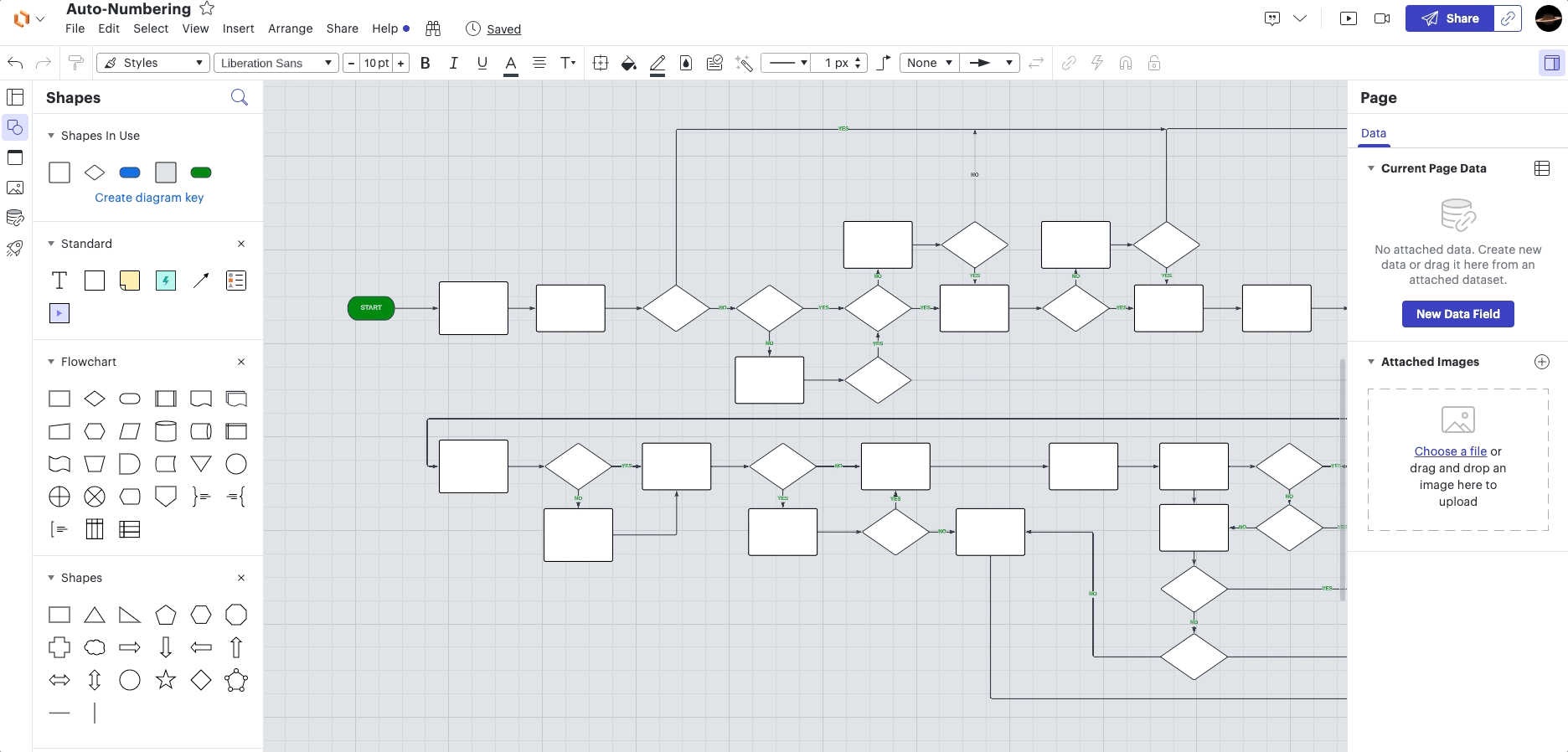
3. Add page data "Numbering" with the formula
=groupby(map(sort(filter(children, x => and(not(iserror(x.Distance)), itemtype(x) = 'Block')), 'asc', x => x.Distance + 0), x => object('id', label(x), 'index', x.index)), x => x.id, x => x.index). This formula sorts all blocks in the flow chart by distance and then groups them into an object where the key is the shape label (ID) and the value is the index returning in a mapping from block to unique numbering.
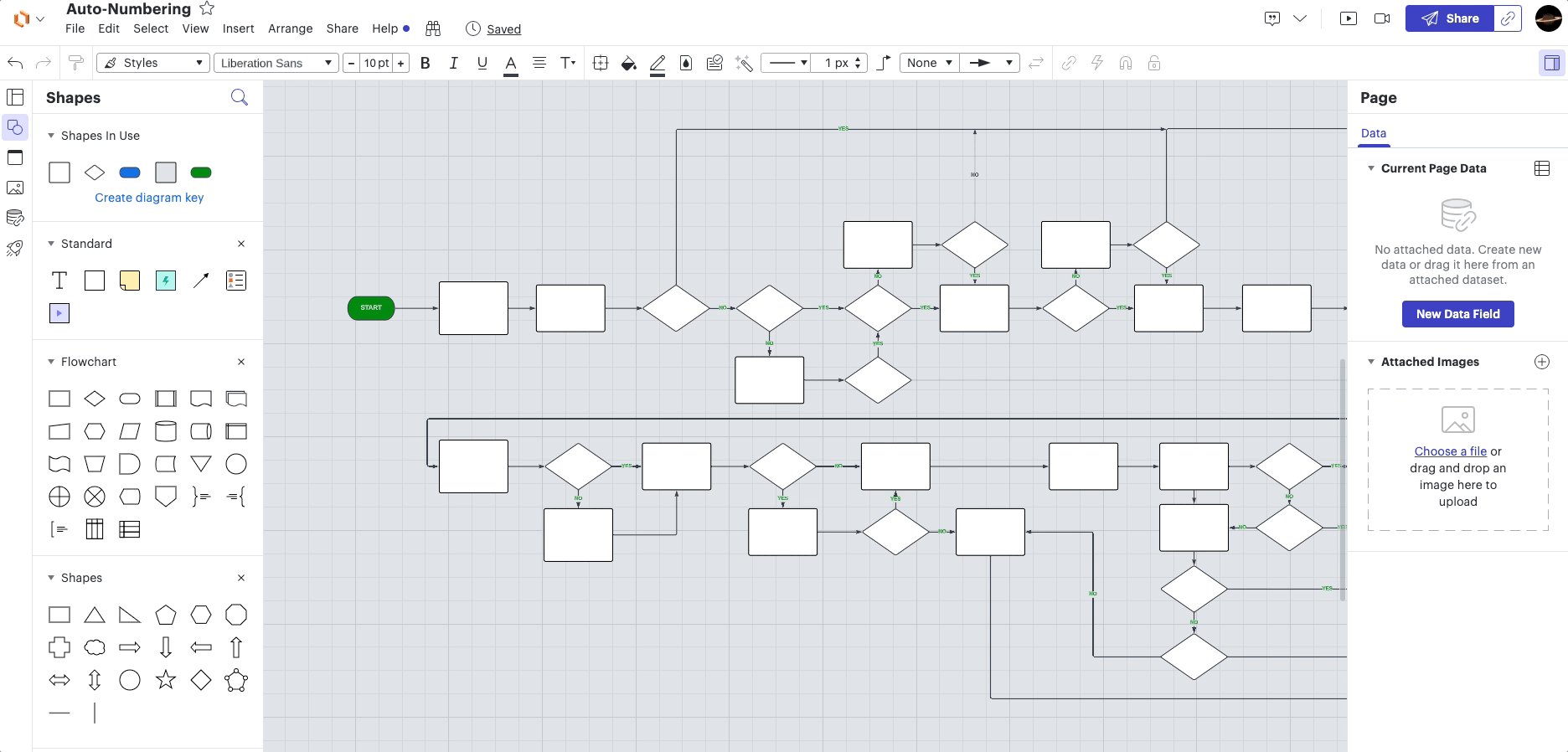
4. Lastly add a conditional formatting rule to add a badge when NOT(ISERROR(@Distance)) and itemtype = 'Block' (to prevent them from showing on lines) with the formula =GET(Page."Numbering", label) for the badge label. See screenshot for what the conditional formatting rule should look like (no else condition needed for this).
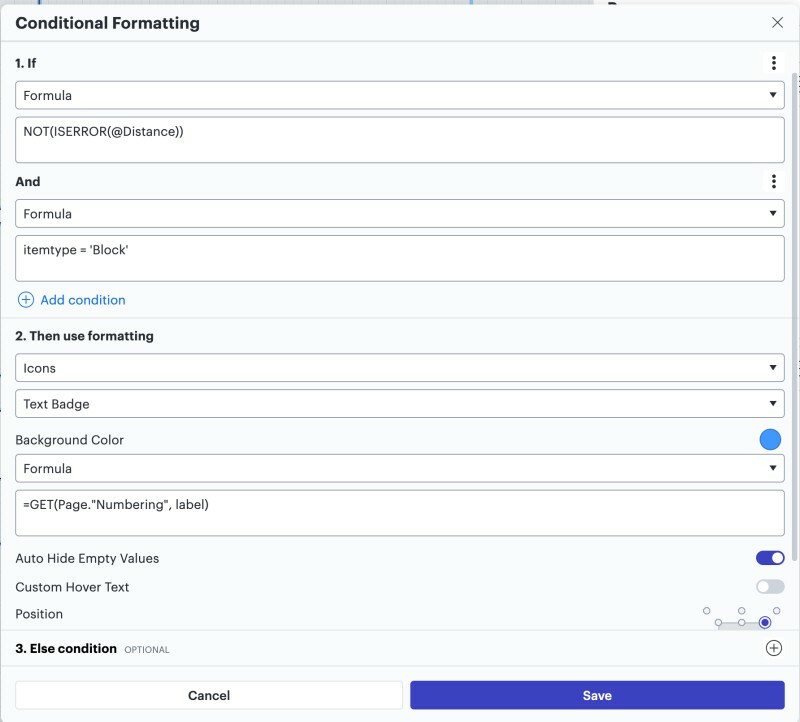
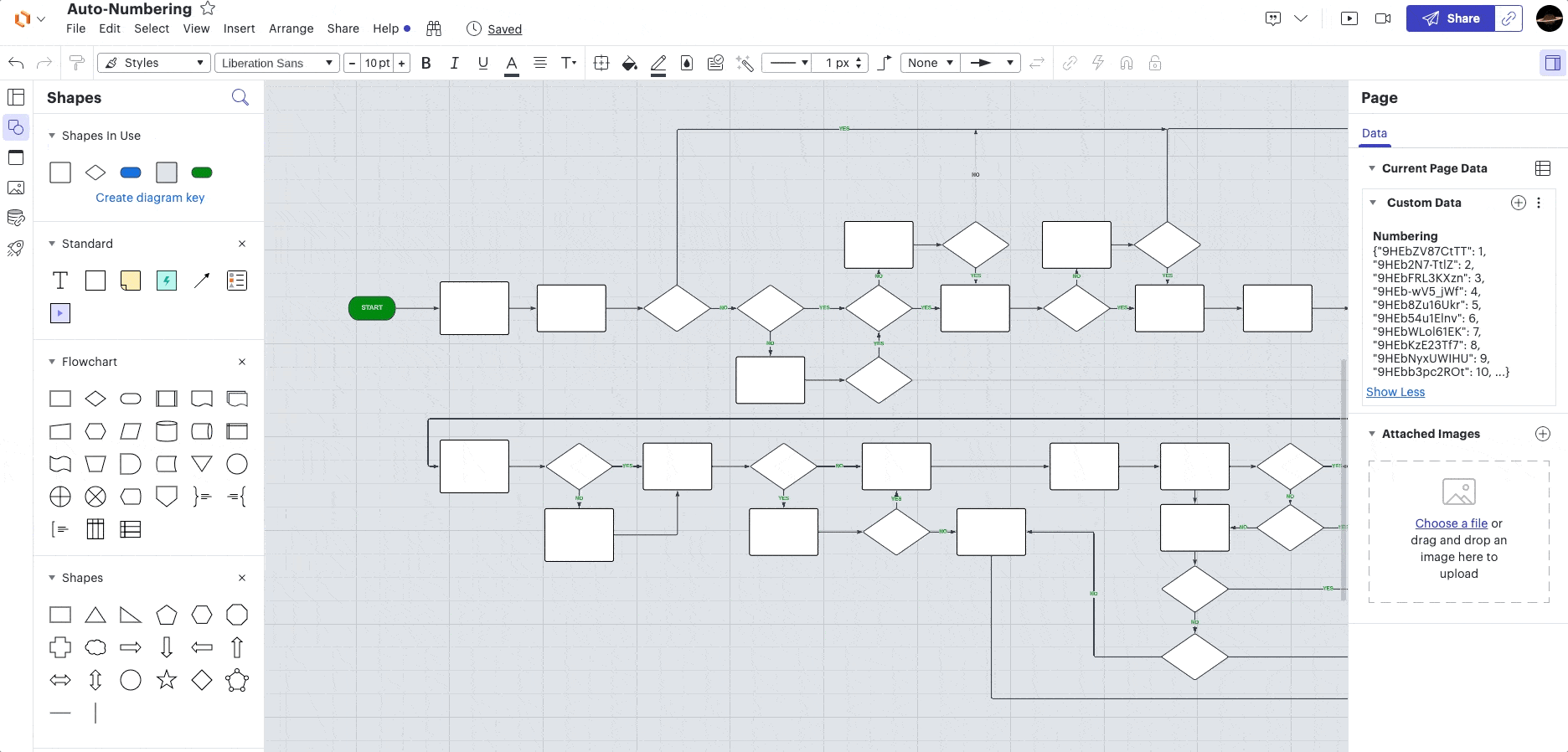
These steps will allow you to easily add and update step numbers to process flows while eliminating any duplicate numbers!



